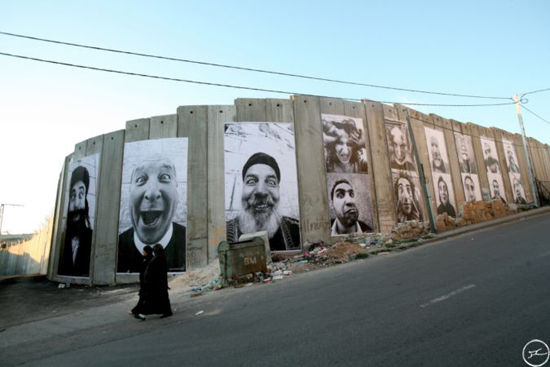[ted id=1636 width=560 height=315]
Israeli graphic designer Ronny Edry has always loved posting images on Facebook, most of them garnering just a few random likes from his friends. But on March 15, he posted an image that got a different kind of reaction. The image showed him holding his young daughter, an Israeli flag in her hand. In comic book-style bubbles, the text on the poster reads, “Iranians, we will never bomb your country. We [heart] you.”
As Edry explains in today’s talk, filmed at TEDxJaffa, Israel and Iran have been on the brink of war for years. Still, he was shocked at how quickly his message of love made its way around the internet. “Later on in the night, I woke up and went by the computer and I see all these red dots on Facebook. I see many people talking to me, most of them I don’t know,” says Edry. “A few of them were from Iran. In Israel, we don’t talk to people from Iran.”
Messages from other Israelis poured in, requesting that the same poster be made with their image on it. Meanwhile, heartfelt emails from Iran poured in.
“Iranians started to respond with their own posters. They have graphic designers. What? That’s crazy,” jokes Edry. “They’re shy, they don’t want to show their faces, but they want to spread the message. They want to say the same thing. Now it’s communication. It’s a two-way story. It’s Israeli and Iranian sending the same message to each other. We are two people who are supposed to be enemies.”
Soon, CNN picked up Edry’s campaign.
“When you see the Middle East, it is only bad news,” says Edry. “Suddenly there was something happening that was good news … We’re showing a new reality.”
Edry’s poster gave rise to the Facebook groups “Israel Loves Iran” and “Iran Loves Israel.” Similar pages were also created for “Palestine Loves Israel” and “Israel Loves Palestine.” Others embroiled in conflicts across the globe picked up the idea too.
To hear more of the amazing reactions to Edry’s online campaign, watch his talk. Below, see more of the posters, as well as photos of other actions designed to diffuse tensions in Israel through imagery.
Edry’s graphic designer friends set up a shop to create posters for fellow Israelis. Here, a sampling.
Here, some of the images created by Iranians.
Above, images from Edry’s latest — and perhaps bolder — campaign, called “Not ready.”
Edry’s work reminds us a lot of TED Prize winner JR’s “Face to Face,” which he calls “the largest illegal photography exhibition ever.”
In 2007, JR and collaborator Marco shot stunning — and often funny — black and white portraits of Israelis and Palestinians who do the same jobs. Their oversized images mingled together, pasted on the walls that separate Israel from Palestine. JR says that the project came about when he and Marco traveled to the region, examining why the two cultures cannot get along.
“These people look the same; they speak almost the same language, like twin brothers raised in different families,” reads the project website. “A religious covered woman has her twin sister on the other side. A farmer, a taxi driver, a teacher, has his twin brother in front of him. And he is endlessly fighting with him.”
The exhibit aimed to give a face to the other side.
In 2011, JR established Inside Out, a global art project that allows anyone around the world to upload images and get large poster-sized print-outs for actions with a social purpose. With Inside Out, JR once again headed to Israel, spending two weeks traveling through Tel Aviv, Jerusalem, Ramallah and Bethlehem with a giant photobooth in a mobile truck. Participants stepped into the truck and took portraits. Then, they were able to paste up their posters instantly. Again, the idea of this project — called “Time is Now, Yalla!” — was to personalize the conflict.
In the port city of Haifa, another initiative brings people together through art. Beit Hagefen, Haifa’s Arab-Jewish Cultural Center, kicked off the Coexistence Walk during their “Festival of Festivals” — a tradition begun in 1993 when Ramadan, Christmas and Hannukah overlapped. Each year (the tradition continues even if the holidays do not coincide), different artists from diverse backgrounds come together over a common theme and use the streets and buildings as canvasses. The idea: to foster unity. Some of these artists come from families with one Jewish and one Arab parent, so these efforts for peace are especially meaningful.
The Festival of Festival attracts 200,000 people annually, 75% of them visitors to the city. This event has become a pinnacle of multiculturalism in the region. The executive director of Beit Hagefen tells The Jerusalem Post, “It’s easier to bring people together around art and culture and not debates.”
These initiatives also remind us of how , in 2005, street artist Banksy made a splash when he headed to the West Bank Barrier. There, he created nine paintings — one showing a window with a scenic mountain in the background and another showing a white horse peaking its head through the wall.







Comments (10)
Pingback: Graphic design may change the world | JAK in Action